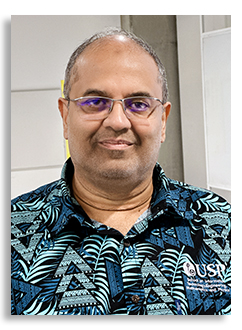
Abstract
The South Pacific region spreads over 33 million square kilometers of ocean. In contrast, the total land-mass is very small. For a country Kiribati, the
ratio of sea-area to land-area is more than 4000. Offshore sources of renewable energy such as tidal currents, waves, OTEC and offshore wind are abundantly available. The unique nature of South Pacific countries with scattered islands requires tailor-made
solutions. In this scenario, both onshore and offshore sources of renewable energy such as solar, wind, biofuels, tidal currents, OTEC and waves have strong potential for becoming sustainable sources of power. The ongoing work involves design of blade sections
and blades for wind turbines and tidal current turbines. The wind speeds on land are not high; at the same time, the power requirements are also not large. So, small wind turbines of the order of tens of kW will be sufficient to meet the requirements of many
of the communities. A number of blade sections and full turbines are designed using multi-objective genetic algorithm. Another area of focus is solar chimney power plants which included investigation of the effect of geometric parameters, experimental testing
at different solar insolations and for different chimney heights. The region has a huge number of reef openings, passages and sea-connected rivers where there are strong uni-directional and bi-directional currents. ADCP measurements are performed at a number
of locations and some more are in progress. Horizontal axis and ducted Savonius and crossflow turbines are designed for some of the sites. At some of the locations with strong waves, long term measurements are performed with a plan to extract energy. The South
Pacific countries have probably the strongest potential for OTEC. Measurements at some locations showed a temperature difference of 25-27oC between the surface and at a depth of 1000 m. A lab-scale OTEC plant was built and tested for performance and another
one with a higher temperature difference was tested. The wave energy research includes development of new wave energy conversion devices such as an innovative concept of a rectangular inclined OWC (with the inclination angle optimized) designed to direct the
bi-directional flow onto the blades of a Savonius rotor, a novel double OWC device, and the rotors driven by the orbital motion in waves. Feasibility studies on the use of cold deep seawater for air conditioning of two of the campuses of the University and
the design of seawater air conditioning system (SWAC) are completed. Straight Vegetable Oils (SVOs) as well as esterified oils are tested for power generation. An innovative divergent section Rocket Stove is designed and tested. Considering the research that
is being carried out at UNSW, there are very good prospects of collaborative research in the area of renewable energy. The resources available at UNSW (including large experimental facilities) would be extremely helpful in the development of the South Pacific
region.
Click here to see all available video seminars.
Click here to go to the SPREE HOMEPAGE.
Brief Bio
Prof. M. R. Ahmed holds a PhD degree in the area of Fluid Dynamics (energy efficiency). He has held full-time and visiting positions in Japan,
New Zealand, India and South Korea apart from his current position at the University of the South Pacific as a Professor of Mechanical Engineering. He is also the Deputy Head of School for Research, Innovation and Graduate Affairs at the School of Information
Technology, Engineering, Maths and Physics (STEMP). His areas of interest include wind energy, wave energy, tidal current energy, solar thermal energy, ocean thermal energy, seawater air conditioning, design of blade sections and blades. He is working in these
areas for about twenty years and has about 140 international publications with about half of them in reputed international journals. He was an invited speaker at a number of international conferences, a member of the International Advisory Boards/Technical
Committees of the International Symposium on Fluid Machinery and Fluid Engineering, International Symposium on Low Carbon and Renewable Energy Technology, Asia-Pacific Forum on Renewable Energy (2011-2024) and the IAHR Symposia (Beijing in October 2017 and
Xinjiang in 2023). He was a member of the Organizing Committee for ASME International Mechanical Engineering Congress and Exposition (IMECE2013) held in San Diego, USA and also of the Asian Wave and Tidal Energy Conference Series (AWTEC2012, 2014 and 2016).
He and his students have received best-paper awards at many international conferences. He is a reviewer for many reputed international journals. He was also a reviewer of the IPCC report on Renewable Energy Sources and Climate Change Mitigation. He is working
on a number of projects in the above-mentioned areas and has given more than 20 presentations and invited lectures at a number of universities and research centres across the globe. He is the leader of the Renewable Energy Research Group at USP and was instrumental
in attracting a large project from KOICA in the area of renewable energy. He is a life member of ASME, a Senior Member of AIAA, a member of IEEE and a member of AEE. He is working on a number of projects in the above-mentioned areas including the implementation
of a seawater air conditioning system for a large building at USP.
